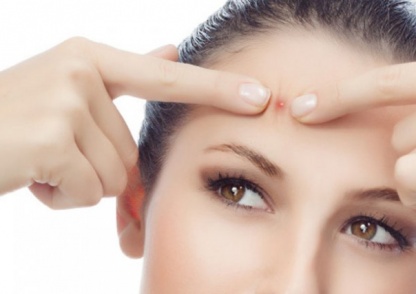News focus
Diagnosis & Treatment Erectile Dysfuntion
10:49:3502/04/2018
Diagnosis
For many men, a physical exam and answering questions (medical history) are all that's needed for a doctor to diagnose erectile dysfunction and recommend a treatment. If you have chronic health conditions or your doctor suspects that an underlying condition might be involved, you might need further tests or a consultation with a specialist.
Tests for underlying conditions might include:
- Physical exam. This might include careful examination of your penis and testicles and checking your nerves for sensation.
- Blood tests. A sample of your blood might be sent to a lab to check for signs of heart disease, diabetes, low testosterone levels and other health conditions.
- Urine tests (urinalysis). Like blood tests, urine tests are used to look for signs of diabetes and other underlying health conditions.
- Ultrasound. This test is usually performed by a specialist in an office. It involves using a wandlike device (transducer) held over the blood vessels that supply the penis. It creates a video image to let your doctor see if you have blood flow problems.
This test is sometimes done in combination with an injection of medications into the penis to stimulate blood flow and produce an erection.
- Psychological exam. Your doctor might ask questions to screen for depression and other possible psychological causes of erectile dysfunction.
Treatment
Depending on the cause and severity of your erectile dysfunction and any underlying health conditions, you might have various treatment options. Your doctor can explain the risks and benefits of each treatment and will consider your preferences. Your partner's preferences also might play a role in your treatment choices.
Oral medications
Oral medications are a successful erectile dysfunction treatment for many men. They include:
· Sildenafil
· Tadalafil
· Vardenafil
· Avanafil
All four medications enhance the effects of nitric oxide — a natural chemical your body produces that relaxes muscles in the penis. This increases blood flow and allows you to get an erection in response to sexual stimulation.
Taking one of these tablets will not automatically produce an erection. Sexual stimulation is needed first to cause the release of nitric oxide from your penile nerves. These medications amplify that signal, allowing some men to function normally. Oral erectile dysfunction medications are not aphrodisiacs, will not cause excitement and are not needed in men who get normal erections.
The medications vary in dosage, how long they work and side effects. Possible side effects include flushing, nasal congestion, headache, visual changes, backache and stomach upset. Your doctor will consider your particular situation to determine which medication might work best.
Before taking any medication for erectile dysfunction, including over-the-counter supplements and herbal remedies, get your doctor's OK. Medications for erectile dysfunction do not work in all men and might be less effective in certain conditions, such as after prostate surgery or if you have diabetes. Some medications might also be dangerous if you:
· Take nitrate drugs — commonly prescribed for chest pain (angina) — such as nitroglycerin (Minitran, Nitro-Dur, Nitrostat, others), isosorbide mononitrate (Monoket) and isosorbide dinitrate (Dilatrate-SR, Isordil)
· Have heart disease or heart failure
· Have very low blood pressure (hypotension)
Other medications
Other medications for erectile dysfunction include:
* Alprostadil self-injection. With this method, you use a fine needle to inject alprostadil (Caverject Impulse, Edex) into the base or side of your penis. In some cases, medications generally used for other conditions are used for penile injections on their own or in combination. Examples include papaverine, alprostadil and phentolamine. Often these combination medications are known as bimix (if two medications are included) or trimix (if three are included).
Each injection is dosed to create an erection lasting no longer than an hour.
Side effects can include mild bleeding from the injection, prolonged erection (priapism) and, rarely, formation of fibrous tissue at the injection site.
(Photo: internet)
* Alprostadil urethral suppository. Alprostadil intraurethral (Muse) therapy involves placing a tiny alprostadil suppository inside your penis in the penile urethra. You use a special applicator to insert the suppository into your penile urethra.

(Photo: internet)
The erection usually starts within 10 minutes and, when effective, lasts between 30 and 60 minutes. Side effects can include pain, minor bleeding in the urethra and formation of fibrous tissue inside your penis.
* Testosterone replacement. Some men have erectile dysfunction that might be complicated by low levels of the hormone testosterone. In this case, testosterone replacement therapy might be recommended as the first step or given in combination with other therapies.
Penis pumps, surgery and implants
If medications aren't effective or appropriate in your case, your doctor might recommend a different treatment. Other treatments include:
* Penis pumps. A penis pump (vacuum erection device) is a hollow tube with a hand-powered or battery-powered pump. The tube is placed over your penis, and then the pump is used to suck out the air inside the tube. This creates a vacuum that pulls blood into your penis.
Once you get an erection, you slip a tension ring around the base of your penis to hold in the blood and keep it firm. You then remove the vacuum device.
The erection typically lasts long enough for a couple to have sex. You remove the tension ring after intercourse.

(Photo: internet)
If a penis pump is a good treatment choice for you, your doctor might recommend or prescribe a specific model. That way, you can be sure it suits your needs and that it's made by a reputable manufacturer.
* Penile implants. This treatment involves surgically placing devices into both sides of the penis. These implants consist of either inflatable or malleable (bendable) rods. Inflatable devices allow you to control when and how long you have an erection. The malleable rods keep your penis firm but bendable.

(Photo: internet)
Penile implants are usually not recommended until other methods have been tried first. As with any surgery, there's a risk of complications, such as infection.
Exercise
Recent studies have found that exercise, especially moderate to vigorous aerobic activity, can improve erectile dysfunction. However, benefits might be less in some men, including those with established heart disease or other significant medical conditions.

(Photo: internet)
Discuss an exercise plan with your doctor.
Psychological counseling
If your erectile dysfunction is caused by stress, anxiety or depression — or the condition is creating stress and relationship tension — your doctor might suggest that you, or you and your partner, visit a psychologist or counselor.

(Photo: internet)
Alternative medicine
Before using any supplement, check with your doctor to make sure it's safe for you — especially if you have chronic health conditions. Some alternative products that claim to work for erectile dysfunction can be dangerous.
The Food and Drug Administration (FDA) has issued warnings about several types of "herbal viagra" because they contain potentially harmful drugs not listed on the label. The dosages might also be unknown, or they might have been contaminated during formulation.

(Photo: internet)
Some of these drugs can interact with prescription drugs and cause dangerously low blood pressure. These products are especially dangerous for men who take nitrates.
(Source: https://www.mayoclinic.org/diseases-conditions/erectile-dysfunction/diagnosis-treatment/drc-20355782)
Related article











